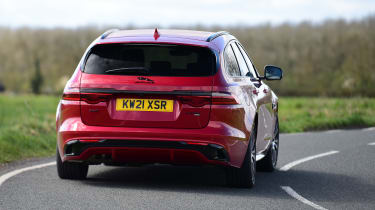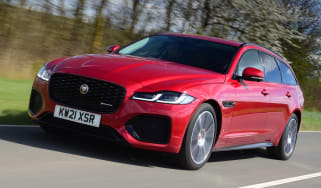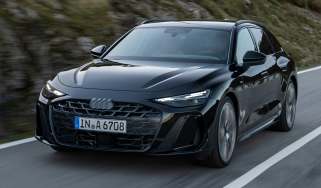Jaguar XF Sportbrake review - Engines, drive & performance (2017-2024)
Sharp, agile, impressive: as long as you don’t look behind you, it’s easy to forget the Jaguar XF Sportbrake is an estate car
Roughly speaking, if you like sharp-handling cars there are two models in this class to choose from: the Jaguar XF Sportbrake and the BMW 5 Series Touring. Both are real driver’s cars, and ones likely to make owners relish long journeys.
Not fussed about taking corners quickly, receiving tactile information through the steering wheel and feeling ‘at one’ with your car? The Mercedes E-Class Estate, Volvo V90 and Audi A6 are worth considering then. None is bad to drive (the latest E-Class is sharper than it’s ever been), but where involvement is concerned, the XF Sportbrake has the best of these three.
Turn into a corner and you’ll instantly know how the Jag is going to behave, where its nose is going to go, how much grip the rear wheels have and how little body lean it’ll exhibit. Uneven roads are effortlessly dealt with, too, but the XF can't quite match the BW 5 Series Touring or Volvo V90 for sheer comfort. The optional Configurable Dynamics package brings adjustable suspension, so you can select a sporty or relaxing ride, or a compromise between the two.
All cars come with a driving mode selector and while the switch for these modes is fiddly to operate, the modes themselves have a real impact on how the XF Sportbrake behaves – even if the Dynamic setting makes the steering a little twitchier than is ideal.
Jaguar XF Sportbrake petrol engines
There are currently two petrol engines offered in the XF. The 247bhp 2.0-litre, badged P250, is smooth and relatively quick, taking 7.1 seconds to go from 0-62mph and offering a top speed of 150mph. But, in normal day-to-day driving, it feels less punchy than the diesel engines, and while Jaguar has made refinement improvements it’s still not the smoothest four-cylinder on the market. The P300 uses a more powerful variant of this same engine, with 296bhp, and is available only with all-wheel drive. Jaguar claims 0-62mph in 6.2 seconds.
Diesel engines
Jaguar did offer several diesel engines in the XF before, but currently, there is just one option – a 201bhp 2.0-litre four-cylinder with mild-hybrid technology. As ever, it still makes the most sense for those covering higher annual mileage, or driving one through a company car scheme, as its higher fuel economy and lower CO2 ratings both work in your favour. It’s capable of covering 0-62mph in 7.8 seconds and going on to 143mph. Like the petrol four-cylinder engines, it’s not the smoothest diesel on the market, but also like the petrol, Jaguar has improved it over time.
There are no such issues with the older 3.0-litre, which serves up an effortless surge of acceleration, sprinting from 0-62mph in 6.6 seconds. It’s refined, too, although, with 20-inch alloy wheels fitted and the adjustable suspension in Dynamic Mode, the ride is borderline uncomfortable.
All XF Sportbrakes use an eight-speed automatic gearbox, which offers smooth changes, but could be more responsive, with slightly delayed gear changes whether the gearbox is left in its automatic mode or whether you’re changing with the paddles. The top petrol P300 is the only XF offered with all-wheel drive.














